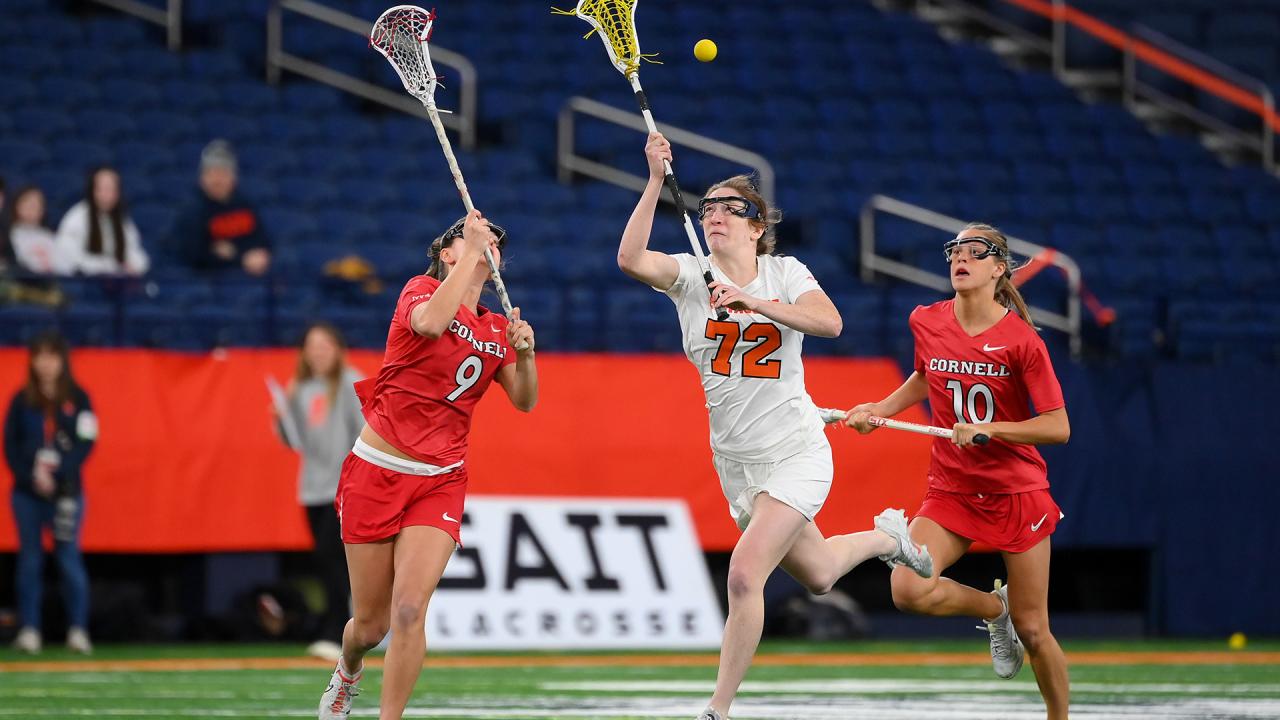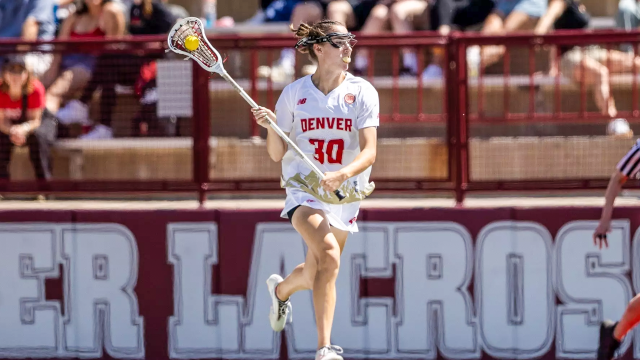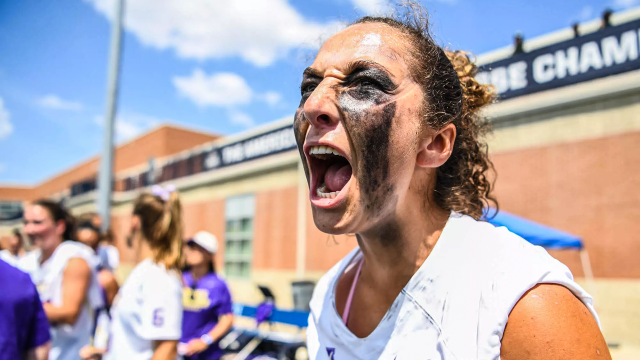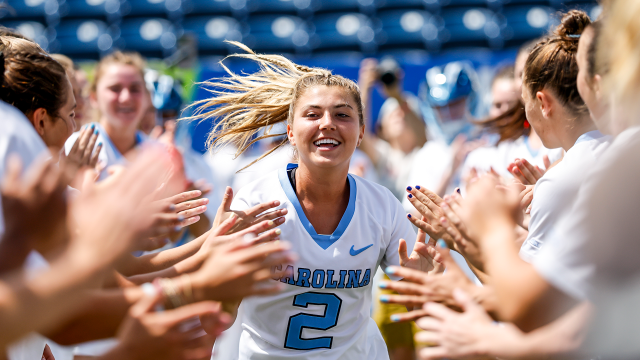
Draws, Pace of Play Highlight NCAA Women's Lacrosse Rule Changes
The NCAA Playing Rules Oversight Panel today approved rules changes to simplify the penalty structure and improve the pace of play in women's lacrosse, beginning with the 2025-26 academic year.
The panel approved the following measures:
- Expanding one-minute releasable penalties in the midfield to all over the field, except in the critical scoring area.
- Using an advantage signal for one-minute releasable penalties, when applicable, which will allow teams the opportunity to play on. The one-minute penalty can be negated if a goal is scored during the advantage or administered at the conclusion of the advantage period.
- Running the clock on 8-meter free positions, except for the last minute of each quarter or overtime.
- Setting up 8-meter free positions only at the two adjacent hashes on both sides of the center hash.
- Upgrading dangerous contact penalties to a non-releasable yellow card.
- Flagging shooting space fouls in the critical scoring area.
Draws
The NCAA Women's Lacrosse Committee rescinded a proposal it earlier approved that would have ended stick checks after goals are scored.
Officials will continue to check the pocket depth of the stick of each goal scorer to see whether the stick is legal.
Teams will have 30 seconds after a goal is scored to be ready for the ensuing draw at midfield. If a team isn't ready for the draw by the end of the 30 seconds, possession would be awarded to the other team.
Overall, draws will occur only at the start of the game, at the start of the second half, at the start of overtime and after goals are scored.
The team having possession of the ball at the end of the first and third quarters will maintain possession when the next quarter starts.
Video review challenges
The panel approved a change to the way video challenges will be handled next season.
If a team has a successful video review challenge in which the original call on the field is overturned, it will maintain its challenge.
However, if the call on the field is not overturned, the team making the challenge will lose a timeout. Teams will have to have a timeout to make video review challenges.
At the request of teams, the panel approved expanding the categories of plays eligible for video review. Teams will be permitted to request video reviews for several areas that, in the past, were reviewable only at the officials' discretion.
Under the new approach, officials no longer will have discretion over whether to initiate reviews, ensuring greater consistency in officiating nationwide. Officials will be required to review:
- Clock errors.
- Whether a shot is released before the possession clock or game clock expired.
- Fouls that cause ejection.
Greg Johnson/NCAA.org
Categories
Tags
Related Articles




